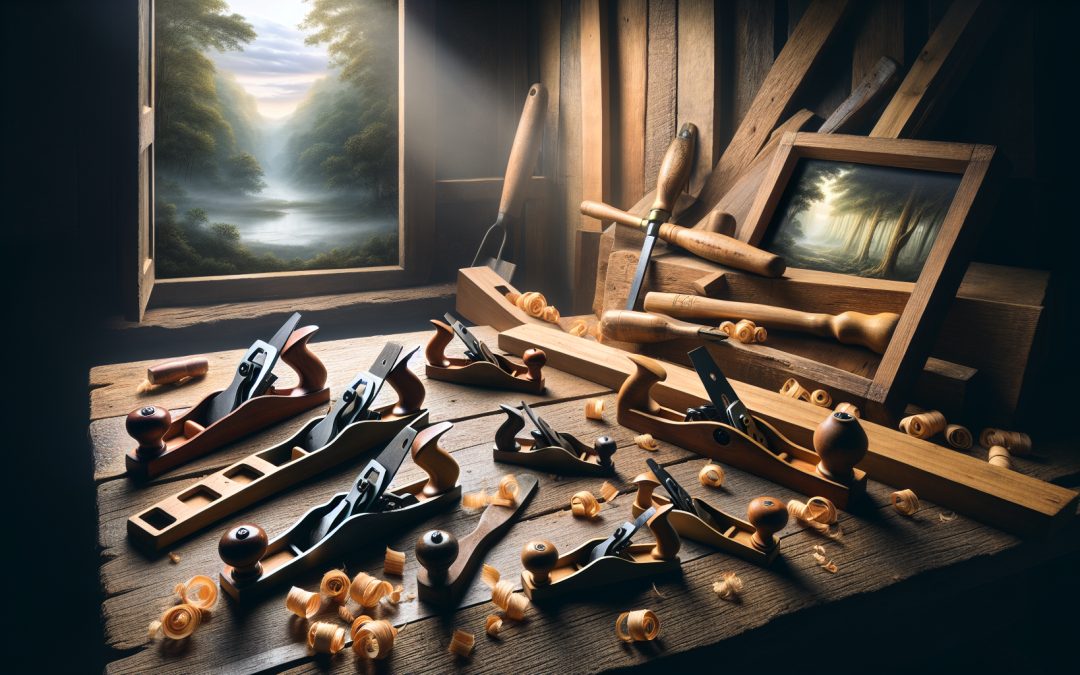The journey of woodworking involves a convergence of skills, precision, and mechanic dynamics. And among these elements, the hand-plane has remained a steadfast ally of the woodworker. This blog post will dive into the importance and techniques of hand planes, which is vital for any woodworker.
Unlocking the Versatility of Hand Planes
Hand planes are essential woodworking tools that come in various shapes and sizes, each designed for specific tasks. From smoothing surfaces to shaping edges and creating joints, hand planes handle a wide array of woodworking assignments with finesse. Understanding the function and capabilities of different types of hand planes brings you closer to unleashing your potential as a craftsman.
Remember that the tool, no matter how sophisticated, is subjected to the skill and understanding of the user. Acquiring knowledge about the hand plane you use is just as vital as sharpening your skills in wielding it. A refined balance between these two entities helps in creating work of great skill and delicacy.
Essence of Precision in Planing
Hand planes don’t merely involve pushing a tool across a wooden surface. Rather, it’s about making accurate, clean cuts while controlling the tool adeptly. A consistent angle, applied pressure, and proper handling of the hand plane dictate the quality of the outcome. Effortlessly creating flat, smooth surfaces requires understanding the tool’s behaviour in response to different wood grains and applying the correct technique accordingly.
Hand planing is fundamentally about patience and precision. The quintessential craftsmanship is achieved when the right amount of force is applied through the plane to the wood, chiseling away layers and leaving behind a clean, finished surface. More than power, an understanding hand and a keen eye give hand planing its true worth.
Overcoming Common Planing Mistakes
Just like any other craft, woodworking has its fair share of challenges. Common issues that woodworkers face while using hand planes include tearing out, rough surfaces, and difficulty in maintaining a consistent angle. These are often due to poor measurements, weak joints, or incorrect tool use. However, fear not, with careful practice, and a keen understanding of the intricate dynamics of hand planes, these issues can be overcome. After all, crafting wooden masterpieces is just as much about embracing flaws as it is about enhancing beauty.
Creating Smooth Finishes with Hand Planes
When a hand plane glides over the grain of a piece of wood, it’s about more than just removing shavings. It’s about creating a smooth finish that enhances the innate beauty of the wood. With repetitive movement, patience, and an understanding touch, your plane can shape raw lumber into beautifully crafted form. As a woodworker, your influence extends through every plane stroke, removing imperfections and leaving behind a flawless finish that reflects both your skill and the character of the wood.
Mastering this technique is a journey of its own. The feel of the wood, the angle of approach, and the connection between craftsman and tool, are all aspects that take time to develop. Embrace the process, for it is a rewarding path that continually refines your abilities.
Nurturing Creativity Through Hand Planing
The hand plane is not just a tool; it’s a partner in your creative process. Developing a bond with your hand plane allows intuitively knowing the settings required for different types of cuts or grains. The understanding of different wood types and their behavior under the hand plane is an essential part of this creative journey. Each new project brings fresh challenges, and through careful observation and loads of practice, you can master the art of hand planing.
To conclude, the hand plane’s magic lies in its simplicity. It binds together the raw glory of wood and the creative spark of a craftsman, crafting wooden pieces that whisper tales of patience, precision, and passion. So, embrace the hand plane, respect its craft, and allow this classic woodworking tool to guide you in your woodworking journey. Mastering the hand plane takes time, but remembering that it’s more about the journey than the destination enhances the crafting experience, making each project an unforgettable chapter in the story of your woodworking journey.

